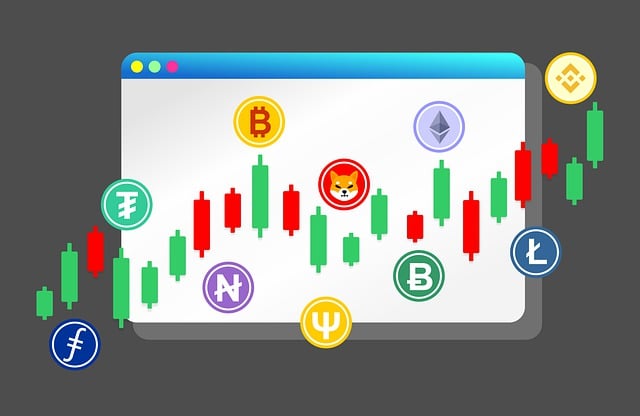Unlocking the World of Trading Bots: An In-Depth Exploration
In the ever-evolving landscape of financial markets, technology is dramatically reshaping the way individuals engage with trading. Among these technological advancements, trading bots have emerged as influential tools that can automate the trading process, execute trades faster than humans, and help traders capitalize on market opportunities. In this extensive article, we'll delve into what trading bots are, how they work, their advantages and disadvantages, and how to choose the right trading bot for your needs. Along the way, I will weave in my own perspectives, providing insights drawn from personal experiences and observations in the financial world.

What is a Trading Bot?
A trading bot is a software application that utilizes algorithms to automate trading strategies in the financial markets. These bots work by connecting to various trading platforms via APIs (Application Programming Interfaces) to analyze market trends, execute trades, and manage investment portfolios without requiring constant human intervention. This technology has democratized trading, enabling both novice and experienced traders to engage more effectively in the market.
The Mechanics of Trading Bots
Understanding how trading bots operate is crucial. Typically, these bots function through a series of programmed instructions that dictate how they should react to specific market conditions. The fundamental components of a trading bot include:
- Market Analysis: Trading bots assess market conditions using technical indicators, patterns, and price movements. For example, some bots employ Moving Averages or Relative Strength Index (RSI) to inform their decisions.
- Order Execution: Once a trading signal is identified, the bot executes buy or sell orders on the trader’s behalf instantly, taking advantage of favorable conditions that may only last minutes or seconds.
- Risk Management: Many bots incorporate risk management protocols, such as setting stop-loss orders to minimize potential losses, which is essential in volatile markets.
The Types of Trading Bots
Trading bots come in various forms tailored to different trading strategies and market conditions. The most common types are:
- Arbitrage Bots: These bots exploit price differences across exchanges to generate profits quickly.
- Market-Making Bots: They provide liquidity to the market by placing simultaneous buy and sell orders to profit from the bid-ask spread.
- Trend-Following Bots: Such bots aim to capitalize on upward or downward market trends based on technical indicators.
- High-Frequency Trading (HFT) Bots: These bots operate at lightning speed, executing thousands of trades per second using complex algorithms.
Benefits of Using Trading Bots
There are numerous advantages to employing trading bots, which can significantly enhance a trader's capabilities. Here are a few key benefits:
1. 24/7 Trading Capability
One of the most compelling reasons to use trading bots is their ability to operate around the clock. Markets don’t sleep, and by using a trading bot, traders can ensure they don’t miss out on potential profits, even when they are not actively trading.
2. Elimination of Emotional Trading
Human emotion can often cloud judgment in trading, leading to impulsive decisions. Trading bots rely on defined parameters and logic, which can minimize emotional decision-making and create a more disciplined approach to trading—a perspective I fully endorse. The clarity of action that comes with automated trading often results in more consistent performance.
3. Ability to Backtest Strategies
Many trading bots come equipped with backtesting capabilities, allowing traders to simulate their strategies based on historical data. This feature helps traders fine-tune their algorithms and assess potential performance before risking real money—a point that cannot be overstated.
Challenges and Limitations of Trading Bots
Despite their many advantages, trading bots are not without their challenges and limitations. It’s essential for traders to be aware of these before relying solely on automation.
1. Technical Issues
Trading bots are reliant on technology, and any glitches or outages can lead to missed trading opportunities or losses. For instance, a trading bot may fail due to server outages or connectivity issues, which can be frustrating, especially during high-volatility periods.
2. Lack of Adaptability
While trading bots can analyze data and execute trades based on set parameters, they lack the human ability to adapt to unprecedented market events. Economic news releases or geopolitical issues might require nuanced responses, which bots are ill-equipped to handle without explicit programming to adapt.
3. Regulatory and Security Concerns
Using trading bots raises various regulatory questions, including compliance with trading laws and the security of sensitive financial data. Traders must exercise due diligence in selecting reputable bot providers to mitigate the risk of hacks or unauthorized access to their trading accounts.

Choosing the Right Trading Bot
With a plethora of trading bots available on the market, selecting the right one can be overwhelming. Here are some criteria to consider when choosing a trading bot:
1. Transparency and Performance History
Look for bots with a clear operational transparency record and credible performance history. Understanding how the bot has performed in various market conditions can provide insights into its reliability and effectiveness.
2. User-Friendliness
A user-friendly interface can enhance the experience of setting up, monitoring, and adjusting the bot's settings, making it more accessible for both novice and experienced traders.
3. Customizability
The ability to customize the bot according to specific trading strategies can be a significant advantage. Traders should look for bots that allow adjustments and technical sophistication, catering to their unique preferences.
Final Thoughts
To wrap up, trading bots have undoubtedly transformed the trading landscape, offering automation, emotionless trading, and the ability to capitalize on opportunities around the clock. However, it is crucial for traders to remain fully engaged in their strategy formulation and market understanding, as no bot can replace the intuition and adaptability of a seasoned trader. As with any investment tool, diligence, caution, and continual learning are necessary for successful trading.
As I reflect on my journey in the trading world, I recognize the balance between leveraging technology and fostering personal acumen as vital to achieving trading success. It is not merely about the bot's capabilities but how one employs them strategically within the broader context of market dynamics.